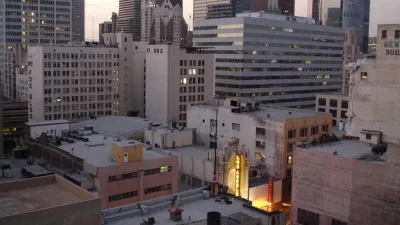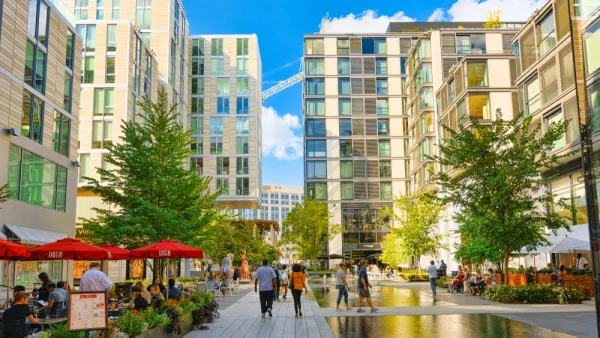With office vacancies climbing and a stubborn supply crunch driving up the cost of housing, some downtowns have emerged at the forefront of a new wave of adaptive reuse.

Writing for CoStar News, Jack Witthaus documents the increasing number of office-to-residential conversions—known in planning parlance as adaptive reuse—underway around the United States.
Office-to-residential conversions are occurring nationally as demand for office space fades. One Wall Street, the former home of Irving Trust bank, recently wrapped its five-year, $1.5 billion transformation into a condo building in lower Manhattan. It is now the biggest office-to-residential conversion in the city’s history. In Salt Lake City, Houston-based developer Hines plans to convert the 217,000-square-foot, 24-story South Temple Tower in downtown Salt Lake City into a 255-unit luxury apartment complex. Projects are also in the works in Dallas and Atlanta and in Tacoma, Washington, among other cities.
Witthaus helpfully notes a few states where legislators have passed laws to assist the trend. In California, for example, where the market demand for adaptive reuse is particularly strong, the state’s latest budget included “calls for spending $400 million as an incentive to developers to convert commercial and office buildings into affordable housing in the budget years 2022-23 and 2023-24.” In New York, “Gov. Kathy Hochul signed a bill into law in June to simplify the process to convert some hotels within or near residential zoning districts to operate as permanent residential spaces. These hotel conversions may be eligible for some funding through state grants.”
The article documents many of the challenges facing office-to-residential conversions to help readers make sense of the scale of the potential to address the nation’s housing shortage through adaptive reuse. Challenges include location—office buildings aren’t always located near amenities that would serve residents—and construction issues like making windows operable for residences.
Witthaus also notes that the new office stock in California and the Sun Belt is better suited for adaptive reuse.
The article includes a lot more detail and analysis, including specific numbers on office vacancies in California’s troubled downtown office markets.
FULL STORY: From Los Angeles to New York, Underused Office Buildings Become Apartments Amid Housing Shortage

Analysis: Cybertruck Fatality Rate Far Exceeds That of Ford Pinto
The Tesla Cybertruck was recalled seven times last year.

National Parks Layoffs Will Cause Communities to Lose Billions
Thousands of essential park workers were laid off this week, just before the busy spring break season.

Retro-silient?: America’s First “Eco-burb,” The Woodlands Turns 50
A master-planned community north of Houston offers lessons on green infrastructure and resilient design, but falls short of its founder’s lofty affordability and walkability goals.

Test News Post 1
This is a summary

Analysis: Cybertruck Fatality Rate Far Exceeds That of Ford Pinto
The Tesla Cybertruck was recalled seven times last year.

Test News Headline 46
Test for the image on the front page.
Urban Design for Planners 1: Software Tools
This six-course series explores essential urban design concepts using open source software and equips planners with the tools they need to participate fully in the urban design process.
Planning for Universal Design
Learn the tools for implementing Universal Design in planning regulations.
EMC Planning Group, Inc.
Planetizen
Planetizen
Mpact (formerly Rail~Volution)
Great Falls Development Authority, Inc.
HUDs Office of Policy Development and Research
NYU Wagner Graduate School of Public Service




























